4th February 2023
- Published
04 February 2023 -
 Download PDF
Download PDF
Supreme Court income tax order on Sikkim
Context
Political parties in Sikkim, including the ruling party, have been protesting against the Supreme Court’s observation that ‘Sikkimese Nepalis were immigrants’ while allowing exemption from income tax to all ‘old settlers ‘ cutting across ethnic lines.
Background
- Before 1990, the Sikkim Income Tax Manual (SITM), was promulgated by the Ruler of Sikkim or Chogya in 1948, as applicable.
- This implied that there was no discrimination between April 1, 1990, and April 1, 2008.
|
Sikkimese women who had the benefit of the exemption were deprived of the same with effect from April 1, 2008, as of IT Act of 1961. |
- The Association of the Old Settlers of Sikkim challenged the constitutional validity of the definition of the term ‘Sikkimese’ under Section 10 (26AAA), as it excluded Indians who settled in Sikkim before April 26, 1975, the day Parliament approved the merger of Sikkim with India.
About the case:
- Answering a review petition filed, the apex court said that under the Sikkim Income Tax Manual, 1948, “all persons engaged in business were subjected to tax irrespective of their origin. “
- Therefore, there was no difference made out between the original inhabitants of Sikkim, namely, the Bhutia-Lepchas, and the persons of foreign origin settled in Sikkim like the Nepalis or persons of Indian origin who had settled down in Sikkim generations back.
|
There are three types of residents in Sikkim namely;
|
- The Supreme Court held that the benefit of tax exemption provided in Section 10 (26AAA) shall be extended to all Sikkimese people.
- Before this judgment, the tax exemption excluded “old Indian settlers”, who had permanently settled in Sikkim before the merger of the state into the Indian union on April 26, 1975, even if their names were recorded in the register maintained under the ‘Sikkim Subjects Regulations, 1961’.
What does the Section 10 (26AAA) say?
- The objective behind Section 10 (26AAA) is to reduce the taxpayer’s burden by providing exemptions.
- This section describes the income that does not form a part of the total income while calculating the tax for an individual, also known as “exempted income”.
- The petitioners challenged the proviso (applicable to married Sikkimese women) and Explanation to Section 10 (26AAA), which elaborated on the type of income falling under the category, along with a definition of ‘Sikkimese’.
- Under the Explanation to Section 10 (26AAA), the definition of ‘Sikkimese’ is confined to:
- Individuals whose name is recorded in the register maintained under the Sikkim Subjects Regulation, 1961 read with the Sikkim Subject Rules, 1961, immediately before the 26th day of April 1975;
- The 73,000-odd individuals whose names were included in the Register of Sikkim Subjects by virtue of Government of India Orders of August 1990 and April 1991; and
- Any individual whose name does not appear in the Register of Sikkim Subjects, but it is established beyond doubt that the name of such individual’s father or husband or paternal grandfather or brother from the same father has been recorded in that register.
|
Section 10 (26AAA) was inserted into the IT Act, 1961 by the Finance Act, 2008 with retrospective effect from April 1, 1990, the date on which the IT Act was made applicable in Sikkim. |
Sikkim and inclusion in India:
- The present erstwhile monarchy in Sikkim started in the year 1642 with the coronation of Phuntsog Namgyal as the Chogyal or king. The king was also a consecrated Buddhist priest.
- The country was frequently attacked by the Gorkha army of Nepal. Initially, the British establishment in India had good relations with Sikkim.
- Relations with the British deteriorated and finally in 1861, the British acquired the regions of Darjeeling and the Terai.
- The Treaty of Tumlong in 1861 made Sikkim a protectorate of the British.
- After India’s independence in 1947, the guarantees of independence that Sikkim had acquired from the British were transferred to the new Indian government.
- Sikkim was finally admitted to the Union of India on 16thMay 1975 as the country’s 22nd
Amazon deforestation heating Tibet
Context
According to a new report, Deforestation in the Amazon rainforest can directly influence temperatures in Tibet, which is more than 15,000 kilometres away from the tropical biome.
About the report:
- The report has highlighted that Climate tipping elements are remotely correlated and there are no borders in the fight against climate change.
- Countries must cooperate and take objective actions in cooperation toward the international goal,
|
Tipping points are thresholds that, if crossed, cause significant changes in a specific region of the Earth system that may be irreversible. |
- The Amazon rainforest is one such tipping point. Even modest, incremental changes in this biome might eventually result in massive, abrupt and permanent changes to the planet.
- Contemporary global discussions suggest that the climate tipping point attainment could occur with a 1-2°C temperature rise.
- Consequently, the Paris Agreement calls for limiting warming to below 2°C and below 1.5°C as a long-term goal.
- This climate network approach was used to analyse the global impacts of a prominent tipping element and concluded that the harsh and warmer temperatures in the Amazon correlated with rising temperatures in Tibet and the West Antarctic ice sheet.
- The researchers succeeded in detecting a pronounced propagation pathway over more than 20,000 kilometres.
- It has been observed that the general trajectory could be plotted from southern Africa through the Arabian Peninsula, then across to Tibet.
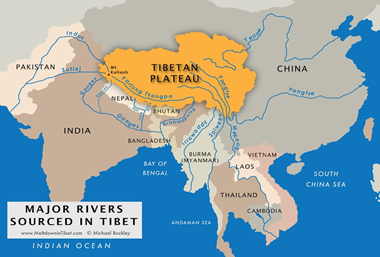
Tibet and its geographic significance:
- Tibetan Plateau is an important physical feature, whose influence is felt not only in the Indian Subcontinent but also on the entire Asian continent.
- It is an interment plateau surrounded by the Great Himalayas to the south, Kunlun ranges to the North-West, Altyn Tagh to the north and Nan Shan to the northeast.
- Tibetan Plateau is called the “Third Pole of the World” because it has the largest reserves of fresh water in frozen ice form, outside the two poles.
- It is also being heated at twice the rate due to global warming, just like the two poles of the world.
- It is the highest plateau in the world and its height is still growing at a slow, but perceptible rate.
- This is because the Indian plate is continuously moving towards the Eurasian plate (at a rate of about 4-5 cm/year) and this is resulting in the Indian plate being pushed under the Eurasian plate.
- This is the reason why the continental crust in the Tibetan Plateau is the thickest and hence it is called the “Roof of the World”.
- The plateau is home to several glaciers and lakes – brackish water lakes in the north and freshwater lakes in the south.
- Tibetan Plateau is thus the lifeline of Asia because it is the source of several rivers like the Indus and Satluj of the Indus river water system, Arun, Ghaghra and Gandak of the Ganges river water system, Manas and Brahmaputra of the Brahmaputra river water system, Yellow River, Yangtze, Mekong and Salween Rivers.
- It also plays a crucial role in the Indian Monsoons, which are the lifeline of several rivers in Peninsular India.
World Wetlands Day
Context
World Wetlands Day is celebrated each year on 2 February to raise awareness about wetlands.
- This day also marks the anniversary of the Convention on Wetlands, which was adopted as an international treaty in 1971.
About
- Background: On 30 August 2021 the UN General Assembly adopted Resolution 75/317 that established 2 February as ‘World Wetlands Day’.
- Need of the initiative:
- Nearly 90% of the world’s wetlands have been degraded since the 1700s, and we are losing wetlands three times faster than forests.
- Wetlands are critically important ecosystems that contribute to biodiversity, climate mitigation and adaptation, freshwater availability, and world economies.
- It is urgent that we raise national and global awareness about wetlands in order to reverse their rapid loss and encourage actions to conserve and restore them.
|
World Wetlands Day is the ideal time to increase people’s understanding of these critically important ecosystems. |
- Theme: Wetland Restoration the theme for 2023 highlights the urgent need to prioritize wetland restoration.
- Organised by: The World Wetlands Day awareness campaign is organized by the Secretariat of the Convention on Wetlands.
What are Wetlands?
- According to the Convention, wetlands include almost any habitat where water is key to the environment and its wildlife.
- Wetlands include swamps, marshes, billabongs, lakes, salt marshes, mudflats, mangroves, coral reefs, fens, peat bogs, or bodies of water - whether natural or artificial, permanent or temporary.
- Water within these areas can be static or flowing; fresh, brackish or saline; and can include inland rivers and coastal or marine water to a depth of six metres at low tide. There are even underground wetlands.
- Anywhere from estuaries, lakes and rivers to underground aquifers, mangroves, coral reefs and rice paddies count.
The Ramsar Convention:
- The Ramsar Convention is an international treaty for the conservation and wise use of wetlands.
- It is named after the Iranian city of Ramsar, on the Caspian Sea, where the treaty was signed on 2 February 1971.
- Known officially as ‘the Convention on Wetlands of International Importance especially as Waterfowl Habitat’ (or, more recently, just ‘the Convention on Wetlands’), it came into force in 1975.
- Objective: The aim of the Ramsar list is to develop and maintain an international network of wetlands which are important for the conservation of global biological diversity and for sustaining human life through the maintenance of their ecosystem components, processes and benefits.
- The convention entered into force in India on 1 February 1982.
|
What is Montreux Record?
|
Wetlands in India:
- India currently has 54 sites designated as Wetlands of International Importance (Ramsar Sites).
- The spread of Wetlands in India:
- Indian Space Research Organisation (ISRO) carried out a National Wetland Inventory and Assessment using Indian remote sensing satellites during 2006-2011 and subsequently brought out national- and state-level wetland inventory atlases.
- The total wetland area estimated is 26 million hectares, which is around 4.63%of the geographical area of the country.
|
The largest wetland in India is the Sunderbans. Sunderban Wetland is also a part of the largest mangrove forest in the world. |
IAF to procure indigenous transport aircraft under 'Make in India'
Context
The Indian Air Force (IAF) has initiated the process of acquiring a Medium Transport Aircraft (MTA), which is to be manufactured in the country under the 'Make in India' initiative.
Background
- In September last year, the Defence Ministry signed a 21.935 Crore contract with Airbus and Space S.A., Spain for procurement of 56 C-295MW transport aircraft to replace the Avro aircraft in service with the IAF which it is executing in partnership with Tata Advanced Systems Limited (TASL).
- An Airbus-TASL joint venture will assemble the C-295s at a manufacturing facility being set up in Vadodara, Gujarat.

About the initiative:
- The Indian Air Force (IAF) has initiated the process to find a replacement for the AN-32 transport aircraft in service.
- It has issued a Request for Information (RFI) for the procurement of a Medium Transport Aircraft (MTA) with a carrying capacity of 18 to 30 tonnes.
|
Request for Information (RFI): An RFI (request for information) is a formal process for gathering information from potential suppliers of a good or service. RFIs are intended to be written by customers and sent to potential suppliers. |
- Several projects for the domestic manufacturing of various defence platforms such as missiles, field guns, tanks, aircraft carriers, drones, fighter planes, tanks, and helicopters are currently underway to meet the defence modernisation needs of the Indian armed forces.
- The IAF operates around 100 AN-32s which are the workhorse of the force and they have all been upgraded recently under a $400-million deal signed with Ukraine in 2009.
- Some of them were upgraded in Ukraine a decade ago to improve avionics and increase engine lifespan, while several others are being upgraded at an IAF repair facility in Kanpur.
Significance under Make in India:
- The RFI has asked aircraft manufacturers to indicate the scope of work related to MTA, which would be undertaken under Make in India under the appropriate category with an estimate of indigenous content mandatorily.
- The joint venture will enhance, methods to enhance indigenisation and to set up a dedicated manufacturing line, including design, integration and manufacturing processes in India.
Short News Article
|
International Relations Paris Club
|
The Paris Club, an informal group of creditor nations, will provide financial assurances to the International Monetary Fund on Sri Lanka’s debt. About:
|
|
Polity and Governance Budget boost for Tribes
|
The Union Budget 2023-24 has issued funds for welfare of Tribals which is in line with the Odhisha’s scheme. About:
PVTGs in India:
|
|
Environment Rare bird species at Renuka Ji wildlife sanctuary
|
Two new feathery visitors, Baikal Teal and Orange-Bellied leafbird, have been sighted at Renuka Ji wildlife sanctuary during this winter migratory bird season. About:
|
|
Environment Ladakh’s first biodiversity heritage site (BHS)
|
Yaya Tso, known as birds' paradise for its beautiful lake has been proposed as Ladakh’s first biodiversity heritage site (BHS). About:
|
|
Economy Follow on Public Offer (FPO)
|
Under FPO, a company that is already listed on a stock exchange, issues new shares to existing investors or shareholders. About:
|
|
Science and Technology Dar es Salaam Declaration
|
The inaugural countries leading the Global Alliance to End AIDS in Children together with community representatives, UN agencies, stakeholders and partners gathered in Dar es Salaam, Tanzania on February 1st, 2023, to discuss our progress and our plans to end AIDS in Children by 2030. About: To achieve the goal of ending AIDS in children, the declaration calls to intentionally strengthen, coordinate and resource robust national programs by:
|
Editorial
Going Green
Context:
- The government’s efforts announced in Union Budget 2023-24 for supporting and promoting green energy are recognisable.
Need for transition:
- Increase in energy demands: The country’s population and India’s appetite for energy to propel the economy are set to surge exponentially.
- To generate employment and support the economy: An urgent imperative and an opportunity to catalyse new industries, generate jobs on a sizeable scale and add to overall economic output.
- Sticking to global commitments: Budget 2023-24 is in accordance with the World Economic Forum’s Annual Meeting in Davos where India holds the key to hitting global climate change targets given its sizeable and growing energy needs.
Budget’s proposal for green energy:
- Boost for indigenous electric vehicle components: With the electric vehicle (EV) revolution poised to take off as every automobile major rolls out new EV models to tap demand, the availability of indigenously produced lithium-ion batteries has become a necessity, especially to lower the cost of EVs.
- Suitable Tax exemptions: To exempt customs duty on the import of capital goods and machinery required to manufacture lithium-ion cells used in EV batteries.
- Filling the gaps: The establishment of a viability gap funding mechanism to support the creation of battery energy storage systems with a capacity of 4,000 MWh.
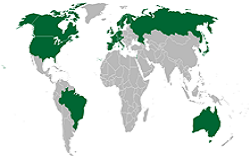
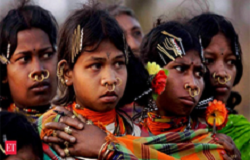

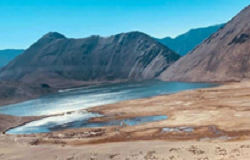

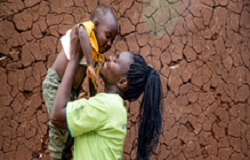

 5 Questions
5 Questions 5 Minutes
5 Minutes





